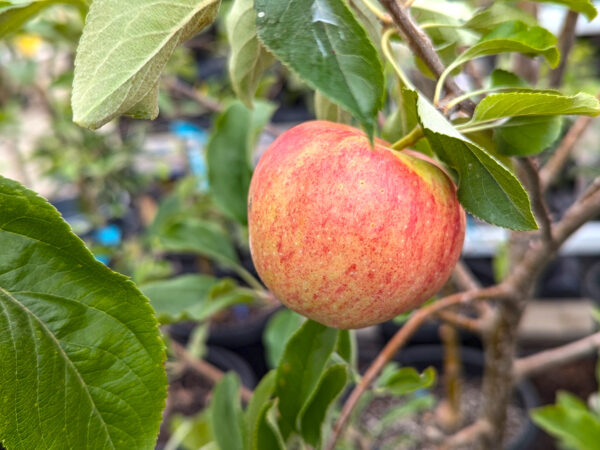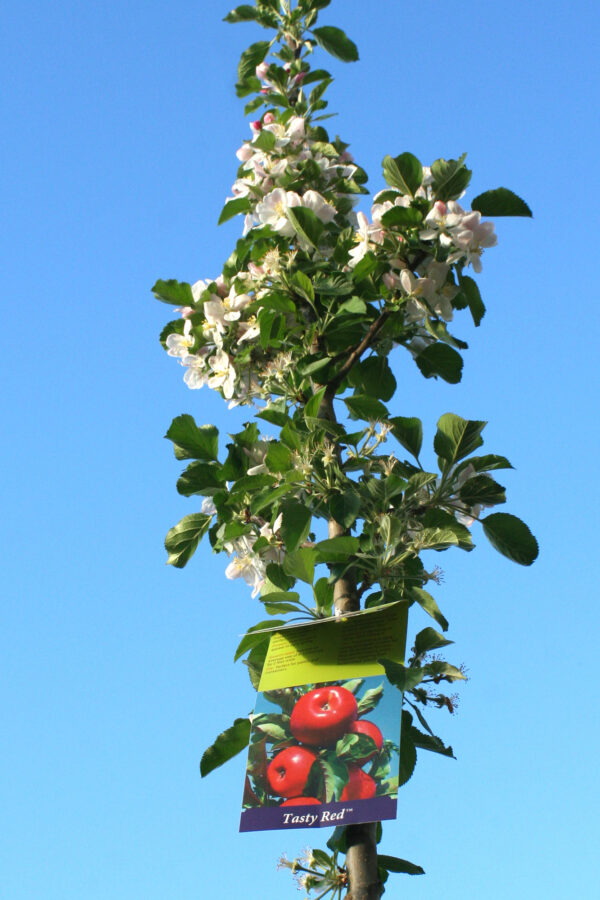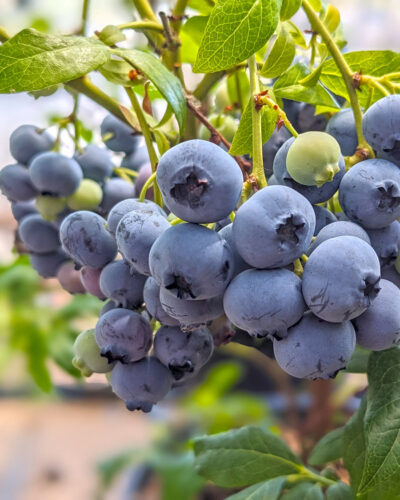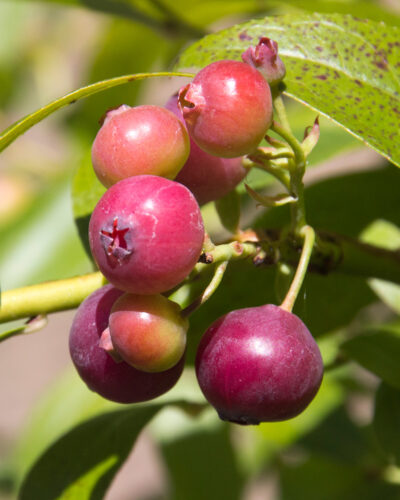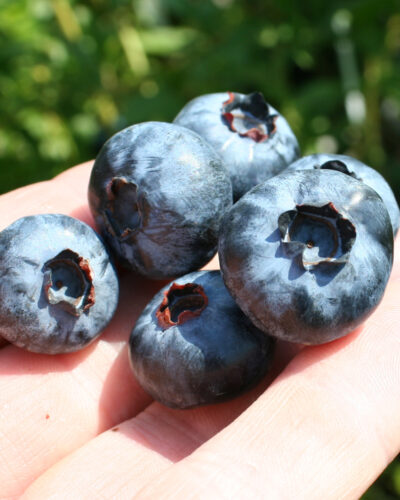Description
The Pacific Northwest is one of the best areas for growing apples. We love these delicious treats and all of the many goodies that can be made with them.
Our Trees
Our fruit trees arrive the beginning of February. From February thru April we offer bare root fruit trees. As the weather warms and the trees begin waking from winter dormancy we plant the fruit tress in pots. These potted fruit trees are then available throughout the remainder of the year. Potted trees can be planted into your yard at any time of the year or held in the pots.
The varieties of trees that we carry are ones that will do well in our area. We have a selection of traditional favorites as well as some newer, specialty fruit trees. We order our fruit trees in early summer. If you are looking to special order something you should contact us around that time. Occasionally events like crop failures can cause shortages of certain varieties.
Tree Care
Fruit trees require some care and maintenance in order to produce the quality fruit that you’re wanting. This begins with pruning. Proper pruning will create a strong tree structure. It will help prevent diseases, improve fruit yield and ripening, and make picking easier. Start proper pruning for your trees when they are young to establish the proper structure.
Apple trees should be fertilized about four weeks before they bloom (mid February). This will put the nutrients where they are needed as the tree begins blooming and producing leaves.
Pollination
Pale pink or white blooms and leaves emerge simultaneously in early spring. Most apples will need another apple variety nearby for cross pollination in order to set fruit. The varieties need to be blooming within the same period. The main time for apples to ripen in our area is in September and October.
Planting Conditions
Apple trees should be planted in full sun with regular watering throughout the summer when fruit is developing. These trees can grow in a wide range of soils, but they will do best if planted in sandy, well drained soil. When planting in heavy soil be sure to amend with compost well.
The Problems
Apples are among the easier fruit trees to care for, however, insects and fungus can still be a problem. The best preventative practices are pruning to improve air flow and cleaning up fallen leaves and fruit off of the ground. Spraying is also recommended to keep your trees and fruit disease and bug free. Follow our Simple Spray Guide.
Tree Size
Fruit trees, like apples, are almost always grafted at the base of the trunk. The portion of the tree below that graft is the rootstock. The rootstock on trees is primarily what determines the tree size: standard, semi-dwarf or dwarfed. Rootstock can also gives the trees some disease resistance qualities and allow it to thrive in different types of soil. Check out our rootstock guide for more information about the rootstock of our fruit trees.
Our Apple Varieties |
Combo ApplesA popular eating apple – also wonderful baked, in pies, sauces, salads or frozen. |
BraeburnA popular eating apple – also wonderful baked, in pies, sauces, salads or frozen. |
FujiA favorite for fresh eating. |
GalaGala’s size, mellow flavor and thin skin make them a perfect choice. |
Granny SmithA popular eating apple – also wonderful baked, in pies, sauces, salads or frozen. |
GravensteinLarge apple with bright green skin and red striping. |
HoneycrispScarlet red over yellow background. |
JonagoldFrequent taste test winner. |
KingOne of the best old-fashiond, heirloom apples. |
Pink LadyMedium to large with blushing pink skin over green. |
Red DeliciousLarge fruit, bright red, waxy skin, pure white flesh. |
Yellow/Golden DeliciousOne of the most widely planted apples in the world. |

